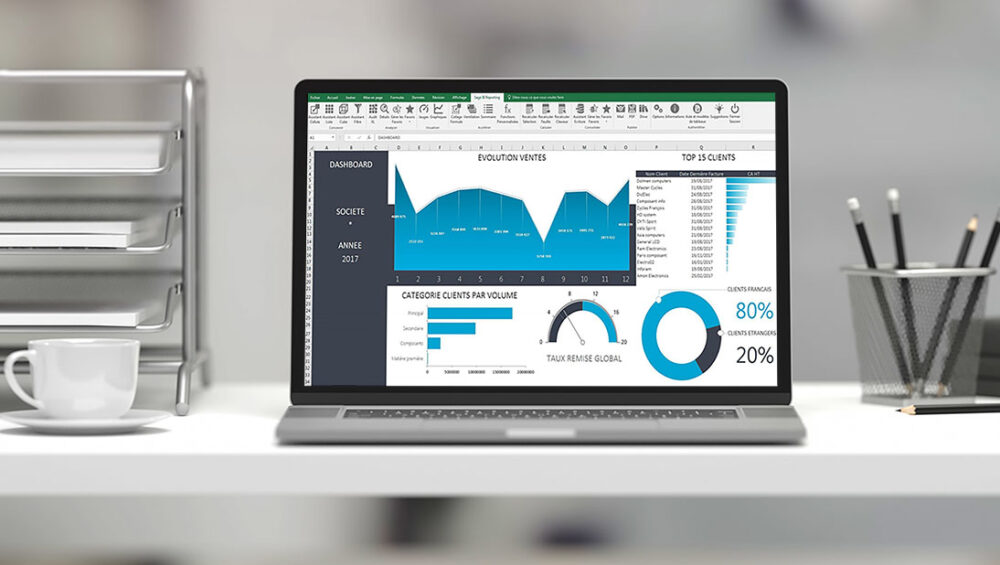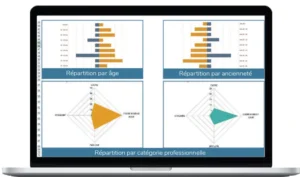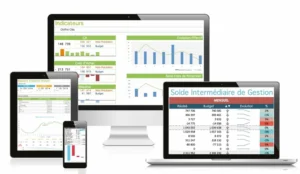Whether you’re a financial controller in a multinational, a housing association manager, an aviation operations analyst, or an SME owner, your decisions depend on timely, accurate, and actionable information. Sage BI (Inside)—Sage’s integrated Business Intelligence module—delivers that capability directly within your Sage environment, turning raw data into meaningful insights for all business functions.
In this guide, we’ll explore why Sage BI (Inside) is a game-changer, how it adapts to different professional needs, and the best practices for making the most of it.
Why Sage BI (Inside) Matters
Traditional reporting often requires exporting data to spreadsheets, manipulating it manually, and relying on a mix of external tools. This process is slow, error-prone, and hard to standardize. Sage BI (Inside) changes the game by:
- Providing real-time access to key metrics.
- Eliminating the need for manual exports.
- Integrating natively with Sage’s ERP and accounting solutions.
- Offering self-service analytics for both technical and non-technical users.
The result? Every department—from finance to HR to operations—can track performance, spot anomalies, and make informed decisions faster.
Key Advantages Across All Professions
1. Centralized, Reliable Data Source
Sage BI (Inside) consolidates information from multiple Sage modules—accounting, CRM, payroll, inventory—into a single version of the truth. This ensures all stakeholders work from the same dataset, reducing discrepancies and improving trust in the numbers.
Example:
- A CFO sees consolidated financial KPIs instantly.
- An HR manager accesses staff cost data without waiting for a finance export.
- An operations team tracks stock levels and supplier performance in real-time.
2. Customizable Dashboards for Every Role
Each profession has its own KPIs. Sage BI (Inside) allows role-based dashboards, so every user gets the most relevant metrics at a glance.
- Finance: cash flow trends, margin analysis, overdue receivables.
- Sales: pipeline health, win/loss ratios, average deal size.
- Operations: order fulfillment rates, downtime analysis.
- HR: staff turnover, training hours, absenteeism trends.
Dashboards are interactive, allowing users to drill down into details without IT intervention.
3. Advanced Analytics Without Complex Tools
While some BI platforms require steep learning curves, Sage BI (Inside) is designed for business users first.
- Drag-and-drop report building.
- Preconfigured KPIs for common industries.
- Conditional formatting to highlight anomalies.
- Instant filters by date, region, department, or product line.
For power users, advanced formulas and calculated measures can be added—offering the flexibility of a full BI suite without leaving Sage.
4. Real-Time Decision Support
Because Sage BI (Inside) works directly with live data, decisions can be based on the latest information, not last week’s exported figures.
- Managers can adjust purchasing based on current demand.
- Financial controllers can react to budget overruns instantly.
- Service teams can track SLAs and resolve issues before they escalate.
5. Cross-Department Collaboration
BI isn’t just about numbers—it’s about shared understanding. With Sage BI (Inside), reports and dashboards can be securely shared across teams, with role-based permissions ensuring each user sees only what’s relevant to them.
Example:
- A housing association finance team shares rent arrears data with property managers.
- In aviation, maintenance teams share equipment performance reports with procurement.
When Sage BI (Inside) Shines Most
Choose Sage BI (Inside) when:
- You want real-time insights from your Sage environment without exporting to Excel.
- Your teams need different views of the same underlying data.
- You want to improve collaboration between finance, operations, and management.
- You’re looking for a low-maintenance, integrated BI solution with minimal IT overhead.
Summary Table: Sage BI (Inside) Benefits by Role
| Role / Department | Key Benefits |
|---|---|
| Finance | Instant P&L, cash flow, budget variance tracking |
| Sales & Marketing | Pipeline analysis, conversion rates, campaign ROI |
| Operations | Inventory optimization, supplier performance |
| HR | Workforce analytics, cost tracking, attrition |
| Executive Leadership | Strategic KPIs, trend forecasting, what-if analysis |
Best Practices for Getting the Most Out of Sage BI (Inside)
- Define clear KPIs before rolling out dashboards.
- Segment dashboards by role to avoid overwhelming users with irrelevant data.
- Train users on both navigation and interpretation—BI is as much about culture as technology.
- Review data governance to ensure accuracy and compliance.
- Iterate dashboards regularly based on user feedback.
Final Thoughts
Sage BI (Inside) turns Sage from a powerful ERP/accounting tool into a decision-making powerhouse. Its ability to deliver tailored, real-time insights to any profession makes it invaluable—whether you’re in finance, sales, HR, operations, or leadership.
The takeaway is simple:
- For fast, reliable, and role-specific insights, Sage BI (Inside) should be your go-to.
- For organization-wide transparency, it breaks down data silos.
- For scalable growth, it ensures every decision is based on facts, not guesswork.






